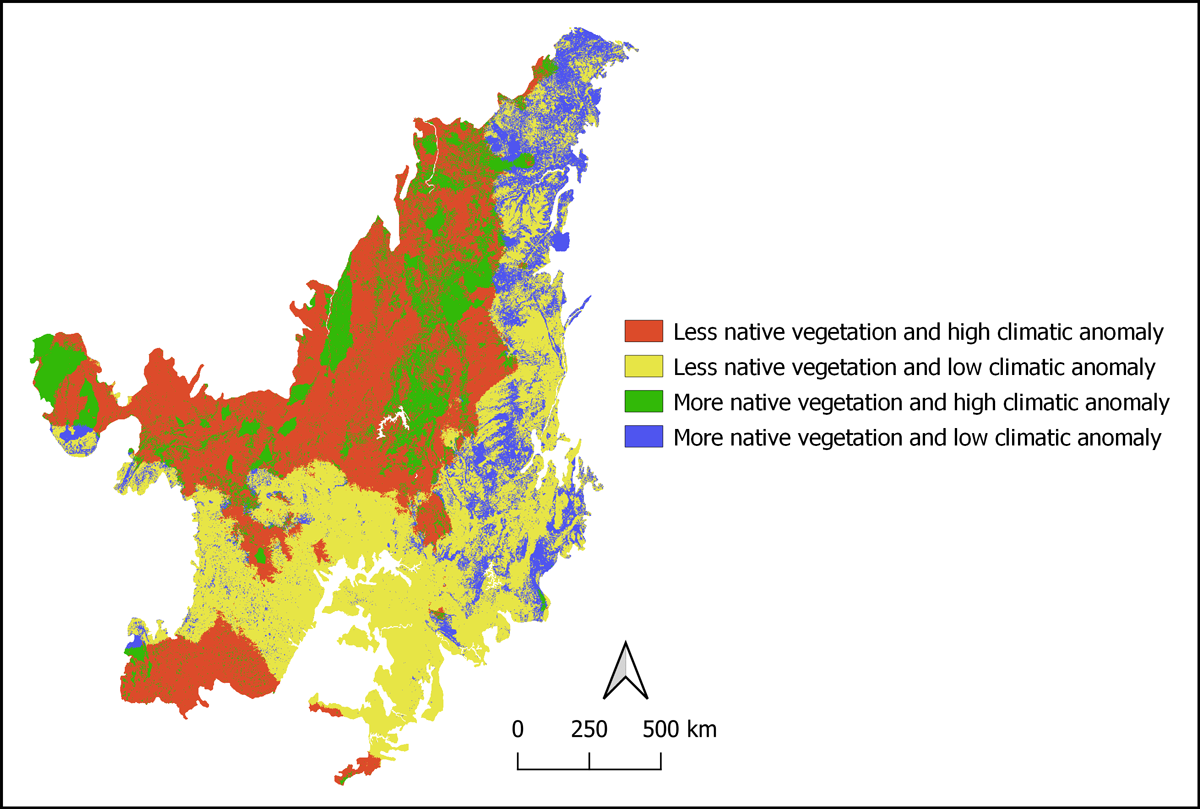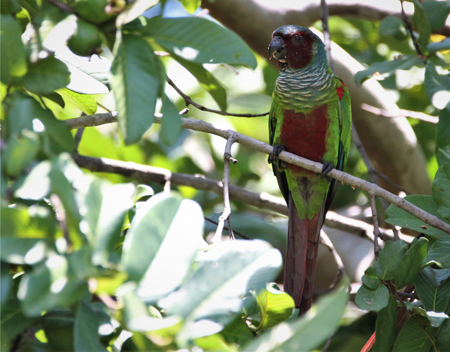Poor land use combined with the onset of climate change is putting the Cerrado under severe strain. This tropical grassland in central Brazil is the world’s most biologically diverse savanna, home to 5% of the planet’s plants and animals, according to the World Wildlife Fund. It’s also the world’s most threatened savanna. Scientists recently studied how much refugia, or land available as habitat for species that are crowded out of their native areas, would be left in the Cerrado by 2050.

Brazilian researchers chose birds for their study, selecting 103 species out of the 856 the Cerrado harbors, focusing on those that rarely or never leave the savanna. They looked at how climate change factors—specifically, temperature and precipitation—would change in kilometer-square grid cells across the biome. The scientists then incorporated something that few do when studying long-term habitat changes: land use predictions. Using maps projecting out to 2050, the scientists categorized each grid cell as either “high native vegetation,” meaning an area that’s likely to stay untouched, or “low native vegetation,” meaning the location has been or will likely be transformed for urban or agricultural use.
Areas projected to have both high native vegetation and low impact from climate change amounted to only 13% of the Cerrado—a small area of possible refugia for these birds in the next 3 decades. And even that area is not guaranteed: “The bad news is, these are not protected areas,” said coauthor of the study Rafael Loyola, scientific director of the Brazilian Foundation for Sustainable Development and a professor at the Federal University of Goiás. Only a little more than 10% of that potential refugia is within land that’s legally protected from land use changes.
Forced Migration
After evaluating possible refugia, Loyola and his colleague Fábio Borges looked specifically at how Cerrado birds would fare given these projections. Nearly three quarters of the birds in their study would be living largely within the highest-risk areas, those prone to the most changes due to both climate and land use—in fact, nearly 100% of the species would be in areas that had transformed to agricultural or urban use. Only four out of the 103 species studied live primarily in the potential refugia.
The paper identifies four bird species as being in the most danger. The crimson-fronted cardinal, the Araguaia spinetail, the Goiás parakeet, and the Bananal antbird—the last two of which are threatened species—are endemic to parts of the Cerrado outside the potential refugia and have shown low responsiveness to changes in their climate.

“The fact that a broad study like this was able to spot the vulnerability of these species is really alarming,” said Renato Pinheiro, a professor of conservation biology at the Federal University of Tocantins in Brazil who was not involved with the study. He said the study is innovative in the sense that it crossed future climate and land use changes to build a predictive model, because studies of this kind usually work on one aspect or the other, rarely intersecting both.
Pinheiro’s team studies the Orinoco goose, a species that lives in both the Cerrado and the Amazon basin and has been attempting to adapt to habitat changes. “The reduction of floodplain areas in the Cerrado has driven these birds to hibernate in rice culture areas since they end up having more nutrients,” Pinheiro said. Such behavioral changes expose the birds to diseases and pesticides.
Protecting the Cerrado
“The Cerrado has a strong agricultural potential because of its fertile soil, many watersheds, and good rainfall regime. A considerable chunk of Brazil’s gross domestic product comes from there.”
“The Cerrado has a strong agricultural potential because of its fertile soil, many watersheds, and good rainfall regime. A considerable chunk of Brazil’s gross domestic product comes from there,” said Loyola.
Such richness attracts economic interests. According to the World Wildlife Fund–Brazil, 40% of the Cerrado is used for agribusiness, and roughly half the biome has been clear-cut for pastures and other agricultural uses. From August 2018 to July 2019, the Cerrado lost 648,400 hectares to development—4 times the size of the metropolitan area of London. According to the MapBiomas project, in 2019 alone there were more than 7,000 deforestation alerts in the Cerrado.
Conservationists are trying to work with farmers to make the land they’re already using more productive, rather than increasing their crops by spreading out over more land. If those tactics aren’t followed, the biome is at risk of losing another third of its area to soy production by 2050 in a business-as-usual scenario, said Loyola. More than 80% of the Cerrado might be lost by the middle of this century. “If this happens, we could lose over a thousand animal and plant species, 480 of them endemic to that area,” said Loyola. Borges and Loyola’s study was published in Perspectives in Ecology and Conservation.
—Meghie Rodrigues (@meghier), Science Writer
Citation:
Rodrigues, M. (2020), Birds are getting caged in at Brazil’s savanna, Eos, 101, https://doi.org/10.1029/2020EO147949. Published on 11 August 2020.
Text © 2020. The authors. CC BY-NC-ND 3.0
Except where otherwise noted, images are subject to copyright. Any reuse without express permission from the copyright owner is prohibited.

